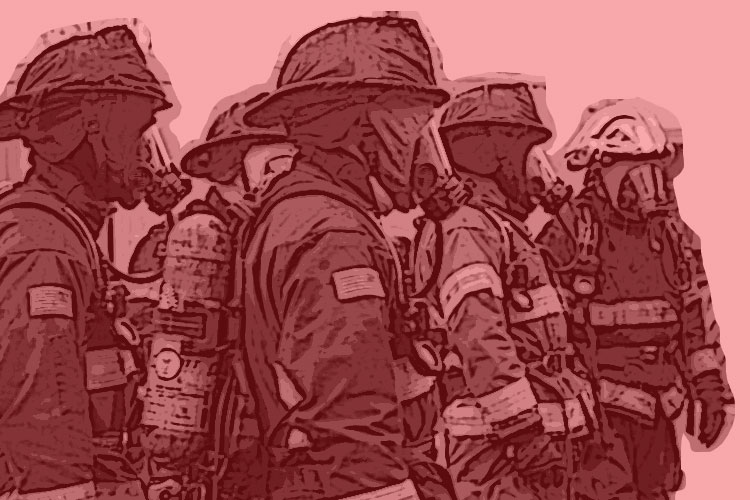
By Todd LeDuc
Tragically, nearly half of all firefighter on-duty deaths in the United States continue to be from sudden cardiac events. That number, tracked by the United States Fire Administration, does not include non-fatal but disabling sudden cardiac events, which are even higher. We have learned much about what contributes to this risk from general population studies of cardiovascular risk. This public health efforts have been aimed at addressing modifiable risk that is associated with higher rates of cardiac events and death. Much of this guidance can be found within the U.S. Preventative Health Task Force recommendations and are aimed at general population primary care recommendations and not specific to unique occupational risk such as the extreme environmental rigors of firefighting.
We know that metabolic syndrome—which includes a constellation of factors such as abdominal obesity, insulin resistance or elevated blood sugar, high triglycerides, low high-density cholesterol, and high blood pressure— adds increased risk within the general population. However, we know from measuring the metabolic equivalency of essential fire service functions that firefighters have much great demands than many if not most other occupations, combined with high heat and toxic exposure and heat stress. In fact, we have firefighters being referred to as “tactical athletes” to describe the physical extremes and demands that they must be prepared for to accomplish the mission.
However, recent public works have described populations of firefighters who have considerable risk factors that contribute to the tragic sudden cardiovascular death that we try to prevent. In one 2019 study, 68 percent of those firefighters reviewed have two or more cardiovascular risk factors. Additionally, 25 percent of those in the study were clinically obese, 27 percent were hypertensive, 30 percent had high cholesterol, and 46 percent or nearly half were determined to have sedentary lifestyles. Sadly, most of these factors are modifiable with annual firefighter medical examinations and appropriate counseling and intervention as to the importance of addressing on their own survival.
RELATED
The Economic Sense of Early Detection in the First Responders
Sudden Cardiovascular Death and Disability in Firefighters: A Complex Interplay
Surviving the Fire Service Cardiac Epidemic
Research has demonstrated that the presence of metabolic syndrome, particularly in firefighters with their occupational extremes, can be particularly devastating. In fact, one study demonstrated that firefighters who had the presentation of metabolic syndrome had a 68-percent increase in sudden cardiac death than those who did not.
We also know that the cardiovascular strain of firefighting causes increased heart rate and cardiac demand, increases in vascular stiffness and blood flow, and decreases in plasma volume, clotting potential, and electrolyte imbalances. The work of Dr. Denise Smith and others has demonstrated from the NIOSH firefighter fatality program that approximately 80 percent of sudden cardiac deaths in firefighters had not only underlying coronary artery disease but also structural enlargement of the cardiac muscle itself. In fact, the BETTER HEART study has recommended enhanced cardiac screening such as cardiac ultrasound or echocardiogram.
A recent study at the American Heart Association scientific session linked firefighting with higher prevalence of atrial fibrillation further complicating the equation of sudden cardiovascular risk. Atrial fibrillation can be identified and managed, thereby reducing the associated risk of clotting and cardiovascular events.
So where do we go from here? The answer includes at its foundation enhanced firefighter comprehensive early detection physicals that monitor these factors, included screening for left ventricular hypertrophy with ultrasound and modifiable risk factors. This must include a strong element of health care provider education with first responders as to the significant higher risk that they have when they are not modified and addressed and then maintained as evidence through their annual department physical exams. If we are to change the “cardiac disaster soup” we must address the underlying risk!

Todd J. LeDuc, MS, CFO, FIFirE, retired after nearly 30 years as assistant fire chief of Broward County, Florida, an internationally accredited career metro department. He served as chief strategy officer for Life Scan Wellness Centers, a national provider of comprehensive physicals and early detection exams. He has served as a member of the International Association of Fire Chief’s Safety, Health & Survival Section for over a decade and is currently secretary of the section. He is a peer reviewer for both professional credentialing and agency accreditation. He is editor of Surviving the Fire Service (Fire Engineering Books) and serves on numerous advisory boards and publications. He can be contacted at Todd. LeDuc@lifescanwellness.com

